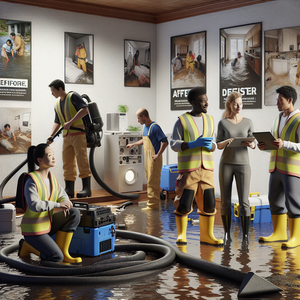
Navigating a Rewarding Career in Firefighting: Insights, Pathways, and Opportunities
Choosing to pursue a career in firefighting is not only admirable but also a significant commitment to community service. This journey entails rigorous training, various certifications, and hands-on experience. As we delve into the multifaceted world of firefighting, we will explore essential certifications like Emergency Medical Technician (EMT) training and the value of volunteer work.
Job Summaries:
Firefighter:
- Firefighters stand as the first line of defense in emergencies.
- Engaged in not only extinguishing fires but also rescuing lives and providing vital medical care.
- This role requires physical fitness, quick thinking, and effective teamwork under pressure.
- Aspiring firefighters must complete extensive training programs and obtain certifications such as EMT and Firefighter I & II.
Fire Chief:
- The Fire Chief serves as the leader of a fire department.
- Overseeing operations, budget management, and personnel training.
- Aspiring Fire Chiefs typically require extensive experience in firefighting.
- Leadership skills are essential for the role.
- A degree in fire science or a related discipline is often complemented.
Fire Inspector:
- Fire Inspectors play a crucial role in fire prevention by ensuring compliance with fire codes.
- They educate the public about safety measures.
- A background in firefighting or fire science is typically required.
- Specific certifications are typically required.
Paramedic:
- Paramedics are vital first responders who provide critical medical care during emergencies.
- This role demands completion of an accredited training program and certification.
- Often involving advanced life support skills.
Fire Investigator:
- Fire Investigators specialize in uncovering the causes and origins of fires.
- They meticulously gather evidence.
- They interview witnesses.
- They work alongside law enforcement to resolve cases.
Emergency Management Director:
- Emergency Management Directors coordinate responses to disasters.
- Ensure preparedness for various emergencies, including fires.
- Develop emergency plans.
- Conduct training exercises.
Wildland Firefighter:
- Wildland Firefighters specialize in combating fires in remote forested areas and grasslands.
- They face unique challenges, utilizing tools and equipment to create firebreaks and control wildfire spread.
Fire Service Instructor:
- Fire Service Instructors train and educate the next generation of firefighters and emergency personnel.
- This role involves developing curricula and conducting hands-on training.
Fire Protection Engineer:
- Fire Protection Engineers design systems to prevent and mitigate fire hazards in buildings.
- This role requires a degree in fire protection engineering or a related field, along with relevant certifications.
Firefighter/EMT:
- Firefighter/EMTs combine firefighting and emergency medical response.
- They provide a comprehensive approach to emergency care.
- This dual role requires rigorous training for both firefighting and EMT certifications.
As you reflect on a career in firefighting, it’s important to understand the various pathways, challenges, and rewards each role presents. This profession requires both physical and mental resilience and offers diverse opportunities to serve and protect communities.
Explore More Jobs

